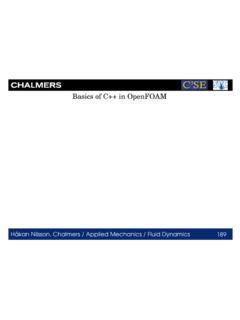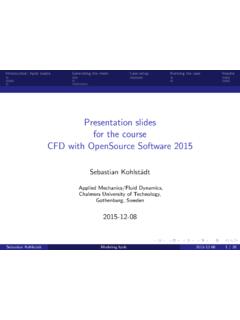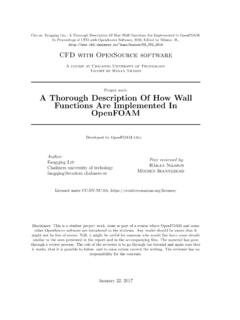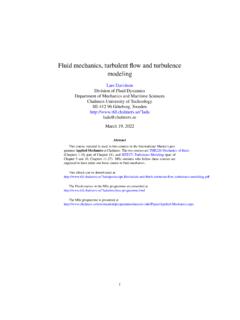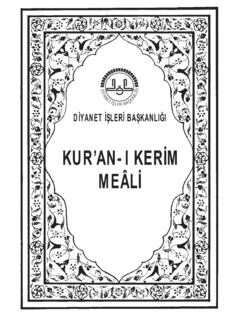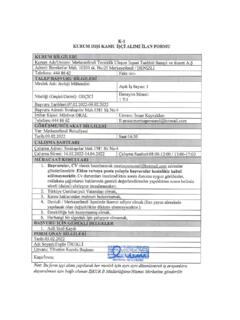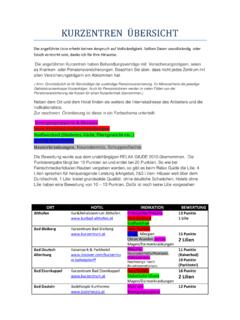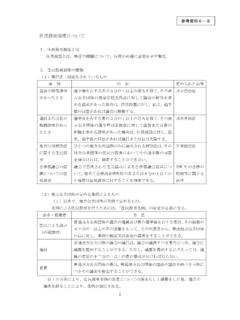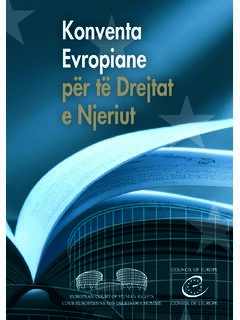Transcription of OpenFOAM programming tutorial - Chalmers
1 POLITECNICO DI MILANO Chalmers . OpenFOAM programming tutorial Tommaso Lucchini Department of Energy Politecnico di Milano Tommaso Lucchini/ OpenFOAM programming tutorial POLITECNICO DI MILANO Chalmers . Outline Overview of the OpenFOAM structure A look at icoFoam Customizing an application Implementing a transport equation in a new application Customizing a boundary condition General information Tommaso Lucchini/ OpenFOAM programming tutorial POLITECNICO DI MILANO Chalmers . Structure of OpenFOAM . The OpenFOAM code is structures as follows (type foam and then ls). applications: source files of all the executables: solvers utilities bin test bin: basic executable scripts. doc: pdf and Doxygen documentation. Doxygen Guides-a4. lib: compiled libraries. src: source library files. test: library test source files. tutorials : tutorial cases. wmake: compiler settings. Tommaso Lucchini/ OpenFOAM programming tutorial POLITECNICO DI MILANO Chalmers . Structure of OpenFOAM . Navigating the source code Some useful commands to navigate inside the OpenFOAM sources: app = $WM_PROJECT_DIR/applications sol = $WM_PROJECT_DIR/applications/solvers util = $WM_PROJECT_DIR/applications/utilities src = $WM_PROJECT_DIR/src Environment variables: $FOAM_APP = $WM_PROJECT_DIR/applications $FOAM_SOLVERS = $WM_PROJECT_DIR/applications/solvers $FOAM_UTILITIES = $WM_PROJECT_DIR/applications/utilities $FOAM_SRC = $WM_PROJECT_DIR/src OpenFOAM source code serves two functions: Efficient and customised top-level solver for class of physics.
2 Ready to run in a manner of commercial CFD/CCM software Example of OpenFOAM classes and library functionality in use Tommaso Lucchini/ OpenFOAM programming tutorial POLITECNICO DI MILANO Chalmers . Walk through a simple solver Solver walk-through: icoFoam Types of files Header files Located before the entry line of the executable int main(int argc, char* argv[]). Contain various class definitions Grouped together for easier use Include files Often repeated code snippets, mesh creation, Courant number calculation and similar Held centrally for easier maintenance Enforce consistent naming between executables, mesh, runTime Local implementation files Main code, named consistently with the executable Tommaso Lucchini/ OpenFOAM programming tutorial POLITECNICO DI MILANO Chalmers . Walk through icoFoam File organization sol cd incompressible cd icoFoam The icoFoam directory consists of what follows (type ls): FoamX/ Make/. The FoamX directory is for pre-processing. The Make directory contains instructions for the wmake compilation command.
3 Is the main file, while is included by The file ,included by , contains all the class definitions which are needed by icoFoam. See the file Make/options to understand where is included from: $FOAM_SRC/finiteVolume/ , symbolic link to: $FOAM_SRC/finiteVolume/cfdTools/general/ Use the command find PATH -iname "*LETTERSINFILENAME*" to find where in PATH a file name containing LETTERSFILENAME in its file name is located. Example: find $WM_PROJECT_DIR -iname "* *". Tommaso Lucchini/ OpenFOAM programming tutorial POLITECNICO DI MILANO Chalmers . Walk through icoFoam A look into #ifndef fvCFD_H #include " ". #define fvCFD_H #include " ". #include " " #ifndef namespaceFoam #define namespaceFoam #include " " using namespace Foam;. #include " " #endif #include " ". #include " " #endif #include " ". #include " " The inclusion files before main #include " " are all the class definitions #include " " required by icoFoam. Have a #include " " look into the source files to #include " " understand what these classes #include " " do.
4 Tommaso Lucchini/ OpenFOAM programming tutorial POLITECNICO DI MILANO Chalmers . Walk through icoFoam A look into , case setup and variable initialization icoFoam starts with int main(int argc, char *argv[]). where int argc and char *argv[] are the number of parameters and the actual parameters used when running icoFoam. The case is initialized by: # include " ". # include " ". # include " ". # include " ". # include " ". where all the included files except are in $FOAM_SRC/finiteVolume/lnInclude. is located in the icoFoam directory. It initializes all the variables used in icoFoam. Have a look inside it and see how variables are created. Tommaso Lucchini/ OpenFOAM programming tutorial POLITECNICO DI MILANO Chalmers . Walk through icoFoam A look into , time-loop code The time-loop starts by: for (runTime++; ! (); runTime++). and the rest is done at each time-step The fvSolution subdictionary PISO is read, and the Courant Number is calculated and written to the screen by (use the find command): # include " ".
5 # include " ". The momentum equations are defined and a velocity predictor is solved by: fvVectorMatrix UEqn (. fvm::ddt(U). + fvm::div(phi, U). - fvm::laplacian(nu, U). );. solve(UEqn == -fvc::grad(p));. Tommaso Lucchini/ OpenFOAM programming tutorial POLITECNICO DI MILANO Chalmers . Walk through icoFoam A look into , the PISO loop A PISO corrector loop is initialized by: for (int corr=0; corr<nCorr; corr++). The PISO algorithm uses these member functions: A() returns the central coefficients of an fvVectorMatrix H() returns the H operation source of an fvVectorMatrix Sf() returns cell face area vector of an fvMesh flux() returns the face flux field from an fvScalarMatrix correctBoundaryConditions() corrects the boundary fields of a volVectorField Identify the object types (classes) and use the OpenFOAM Doxygen ( ) to better understand them what they do Tommaso Lucchini/ OpenFOAM programming tutorial POLITECNICO DI MILANO Chalmers . Walk through icoFoam A look into , write statements At the end of icoFoam there are some write statements ().
6 Info<< "ExecutionTime = " << () << " s". << " ClockTime = " << () << " s". << nl << endl;. write() makes sure that all the variables that were defined as an IOobject with IOobject::AUTO_WRITE are written to the time directory according to the settings in the $FOAM_CASE/system/controlDict file. elapsedCPUTime() is the elapsed CPU time. elapsedClockTime() is the elapsed wall clock time. Tommaso Lucchini/ OpenFOAM programming tutorial POLITECNICO DI MILANO Chalmers . OpenFOAM work space General information OpenFOAM is a library of tools, not a monolithic single-executable Most changes do not require surgery on the library level: code is developed in local work space for results and custom executables Environment variables and library structure control the location of the library, external packages ( gcc, Paraview) and work space For model development, start by copying a model and changing its name: library functionality is unaffected Local workspace: Run directory: $FOAM_RUN. Ready-to-run cases and results, test loop etc.
7 May contain case-specific setup tools, solvers and utilities. Local work space: / Contains applications, libraries and personal library and executable space. Tommaso Lucchini/ OpenFOAM programming tutorial POLITECNICO DI MILANO Chalmers . Creating your OpenFOAM applications 1. Find appropriate code in OpenFOAM which is closest to the new use or provides a starting point 2. Copy into local work space and rename 3. Change file name and location of library/executable: Make/files 4. Environment variables point to local work space applications and libraries: $FOAM_PROJECT_USER_DIR, $FOAM_USER_APPBIN and $FOAM_USER_LIBBIN. 5. Change the code to fit your needs Tommaso Lucchini/ OpenFOAM programming tutorial POLITECNICO DI MILANO Chalmers . myIcoFoam Creating the new application directory, setting up Make/files, compiling The applications are located in $WM_PROJECT_DIR/applications cd $WM_PROJECT_DIR/applications/solvers/inc ompressible Copy the icoFoam solver and put it in the $WM_PROJECT_USER_DIR/applications directory cp -r icoFoam $WM_PROJECT_DIR/applications Rename the directory and the source file name, clean all the dependancies and mv icoFoam myIcoFoam cd icoFoam mv wclean Go the the Make directory and change files as follows: EXE = $(FOAM_USER_APPBIN)/myIcoFoam Now compile the application with wmake in the myIcoFoam directory.
8 Rehash if necessary. Tommaso Lucchini/ OpenFOAM programming tutorial POLITECNICO DI MILANO Chalmers . Creating your OpenFOAM applications Example: Creating the application icoScalarTransportFoam. It is an incompressible solver with a scalar transport equation (species mass fraction, temperature, .. ). To do this, we need to create a new application based on the icoFoam code. Tommaso Lucchini/ OpenFOAM programming tutorial POLITECNICO DI MILANO Chalmers . icoScalarTransportFoam Creating the new application directory, setting up Make/files The applications are located in $WM_PROJECT_DIR/applications cd $WM_PROJECT_DIR/applications/solvers/inc ompressible Copy the icoFoam solver and put it in the $WM_PROJECT_USER_DIR/applications directory cp -r icoFoam $WM_PROJECT_DIR/applications Rename the directory and the source file name, clean all the dependancies and mv icoFoam icoScalarTransportFoam cd icoFoam mv wclean Go the the Make directory and change files as follows: EXE = $(FOAM_USER_APPBIN)/icoScalarTransportFo am Tommaso Lucchini/ OpenFOAM programming tutorial POLITECNICO DI MILANO Chalmers .
9 IcoScalarTransportFoam Physical/numerical model modeling We want to solve the following transport equation for the scalar field T. It is an unsteady, convection-diffusion transport equation. is the kinematic viscosity. T. + (UT ) ( T ) = 0 (1). t What to do: Create the geometric field T in the file Solve the transport equation for T in the file. Tommaso Lucchini/ OpenFOAM programming tutorial POLITECNICO DI MILANO Chalmers . icoScalarTransportFoam Creating the field T. Modify adding this volScalarField constructor before #include " ": Info<< "Reading field T\n" << endl;. volScalarField T. (. IOobject (. "T", (), mesh, IOobject::MUST_READ, IOobject::AUTO_WRITE. ), mesh );. Tommaso Lucchini/ OpenFOAM programming tutorial POLITECNICO DI MILANO Chalmers . icoScalarTransportFoam Creating the field T. We have created a volScalarField object called T. T is created by reading a file (IOobject::MUST_READ) called T in the () directory. At the beginning of the simulation, () is the startTime value specified in the controlDict file.
10 T will be automatically written (IOobject::AUTO_WRITE) in the () directory according to what is specified in the controlDict file of the case. T is defined on the computational mesh (mesh object): It has as many internal values (internalField) as the number of mesh cells It needs as many boundary conditions (boundaryField) as the mesh boundaries specified in the constant/polyMesh/boundary file of the case. Tommaso Lucchini/ OpenFOAM programming tutorial POLITECNICO DI MILANO Chalmers . icoScalarTransportFoam Solving the transport equation for T. Create a new empty file, : echo > Include it in at the beginning of the PISO loop: for (int corr=0; corr<nCorr; corr++). {. # include " ". volScalarField rUA = ();. Now we will implement the scalar transport equation for T in Tommaso Lucchini/ OpenFOAM programming tutorial POLITECNICO DI MILANO Chalmers . icoScalarTransportFoam Solving the transport equation for T. This the transport equation: T. + (UT ) ( T ) = 0. t This is how we implement and solve it in solve (.)}

